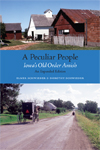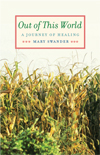Sarah's Seasons
“Sarah's Seasons gives us insight into the life of an Old Order Amish woman—something rare and hard to come by. It also records the growing friendship between Martha Davis and Sarah Fisher and the juxtaposition of the author's life with her subjects.”—Mary Swander, author of Out of This World
“A volume that chronicles the days of a family truly in touch with the human condition and the rhythms of nature…A gem of a book.”—New Oxford Review
“Have you ever kept a diary?” With that question author Martha Davis sets out on her journey into the quietly remarkable life of an Old Order Amish woman know to us as Sarah Fisher. Sarah not only kept a diary but welcomed Martha to read it and to view the world through her eyes. The even, peaceful tenor of Sarah's diary entries and the closeness to nature of her life and work will make readers question the pace and values of their own lives, and the degree of social interconnectedness in Sarah's world will offer a model for many of us outside it.
Sarah's brief daily notations, recorded on a calendar throughout 1976 and 1977, reveal an ongoing account of her seasonal routine. In many ways the straightforward simplicity of her writing is a reflection of her life near rural Kalona, Iowa, a life filled with what Martha Davis calls look-easy tasks undertaken without the conveniences of electricity, phones, or automobiles. For Sarah, diaries are a record. “A diary can settle a question, a disagreement,” she tells Martha. “You look back and see what took place. That's history.”
Through their conversations, Martha soon discovered she had more in common with Sarah than diary writing. Though Davis lived in the mainstream culture, an “English” person as the Amish say, like Sarah she grew up on a farm in rural Iowa during the 1950s and 1960s. Like Martha, Sarah had spent several years as a teacher.
In Sarah's Seasons Martha Davis shares their common experiences and common interests—gardening, quilting, and cooking. Alongside Sarah's diary, Martha presents their shared recipes and conversations as well as reflections on her own more modern existence. Because of her friendship with Sarah, the author found a new sense of belonging to and purpose in the mainstream world. In the end, Sarah's diary becomes for Martha a meditation on time and community.
Foreword by Maxine Greene
Acknowledgments
1.Coming to Know Sarah
January and February
2. Sarah the Teacher: Mother and Guide
March and April
3. Sarah the Quilter: The Season of Quilting
May, June, July, and August
4. Sarah the Gardener: The Season of Growing
September and October
5. Sarah the Entrepreneur: The Fisher Kitchens
November and December
6. Sarah the Writer: Circle Letters and Poetry
Afterword
Works Cited






